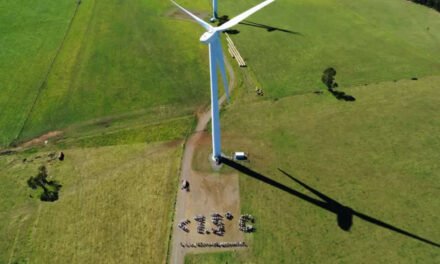Victor Szwed
The Autumn Equinox occurred this year on March 20th which is when the sun was directly above the equator with days and nights being of equal length. This is also the time when we normally see the transition from warmer summer weather to milder autumn weather. We also hope for autumn rains to come as typically rainfalls increase from April onwards to June and July.
March rainfall of 46.8mm was just above the 44.7mm long-term average. That followed drier than average conditions for January and February. The Bureau of Meteorology modelling suggests that for April to the end of June drier than normal conditions are likely for much of Victoria. A few weeks ago the modelling was suggesting close to normal rainfall but those earlier predictions have unfortunately changed.
Autumn was very much in the air over the last weekend in March. Daytime and overnight temperatures were noticeably cooler accompanied by strong blustery winds. The temperature of Lake Daylesford, which has been quite pleasant for swimming since the beginning of November, dropped 5°C over the weekend.
Monsoon rain conditions in large parts of inland Queensland and New South Wales have brought massive flooding for many areas. This follows very high rainfalls that occurred earlier with Cyclone Alfred.
A large catchment area which includes Cooper Creek and the Diamantina will move floodwaters to Kati Thanda – Lake Eyre. This is Australia’s largest salt lake which only has occasional flood-water inflow every few years.
The lowest point of the Lake is 15m below sea level. When it floods the salt concentration reduces and native freshwater fish breed there. Many birds fly in to feed and breed. Pelicans come from southern Australia and as far away as Papua New Guinea. It is a mystery how the Pelicans can sense that there are massive amounts of water flowing in even though they are hundreds or even thousands of kilometres away. In the 1989-1990 flood it was estimated that around 200,000 or 80% of Australia’s Pelicans flew in.
The Bureau has published its Annual climate statement 2024 which can be seen on its web site. The report has a lot of interesting information, such as:
- 2024 was Australia’s second warmest year since national records began in 1910. The national average temperature was 1.46 degrees warmer than the long-term average.
- Nationally, the average rainfall was 28% above the 1961-1990 average and the eighth wettest year since national records began in 1900.
- Rainfall was well above average for many parts of northern Australia but below average or well below average for large parts of southern Australia including Victoria.
- Annual sea surface temperatures for the Australian region for 2024 were the warmest on record.
Water storage levels have generally declined with the drier conditions in Victoria. Daylesford’s reservoirs are at 53% compared to 75% this time last year. Ballarat is lower at 51% compared to 79% and Melbourne at 78.2% compared to 90.7% last year.
Victor Szwed is a local resident who writes a monthly weather update for The Wombat Post.





